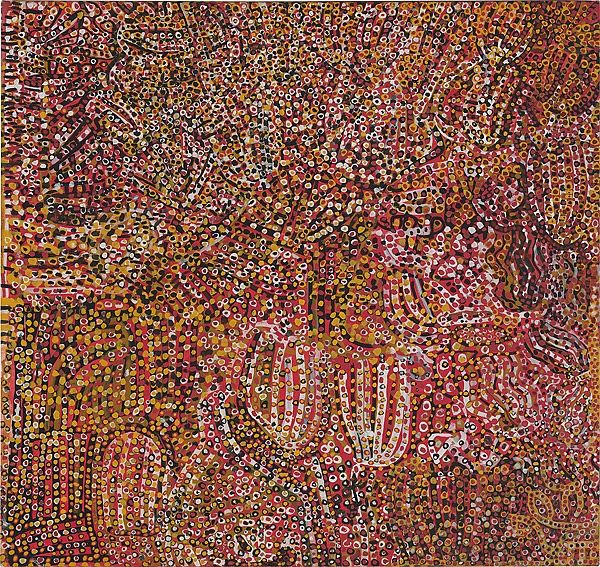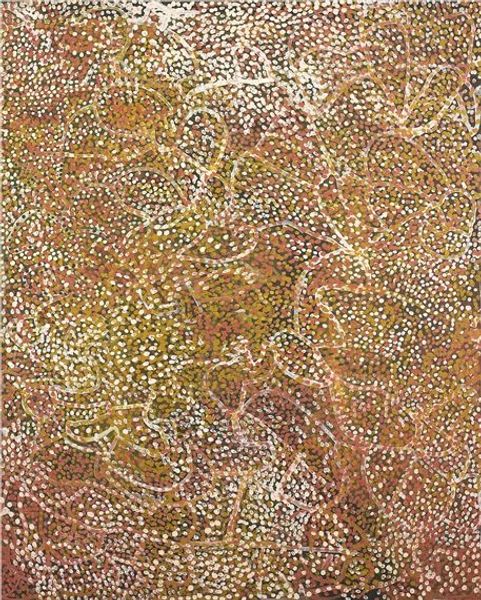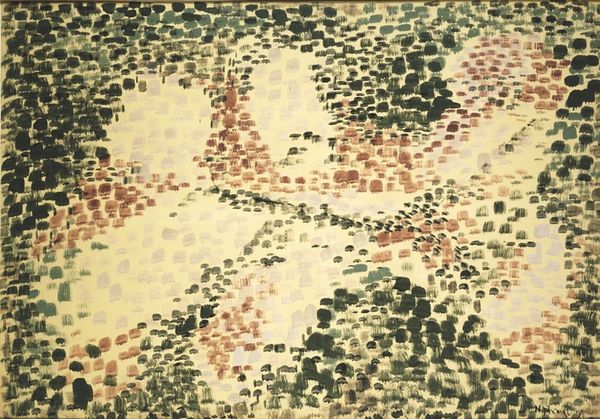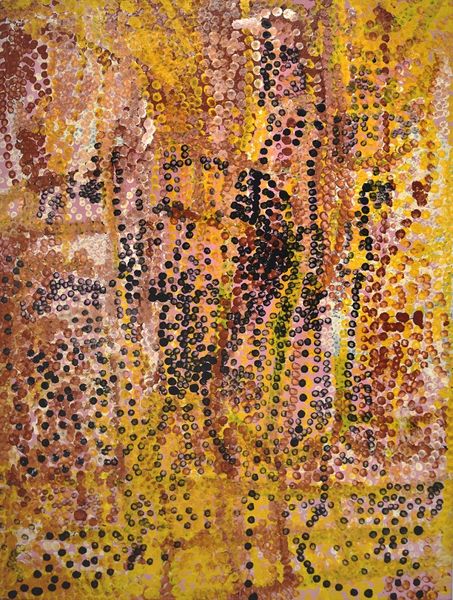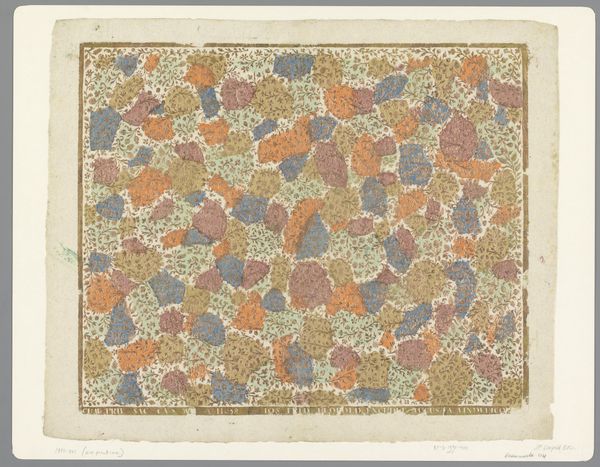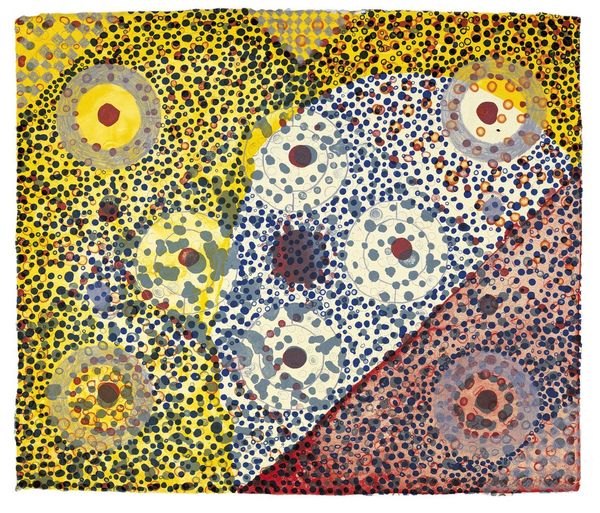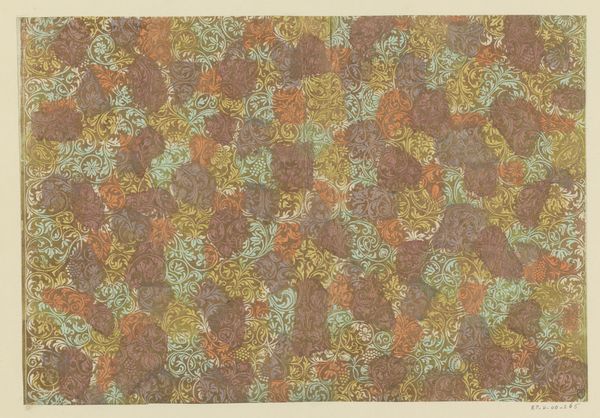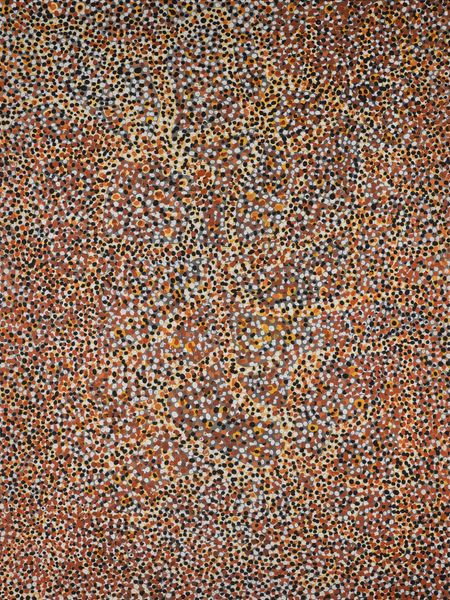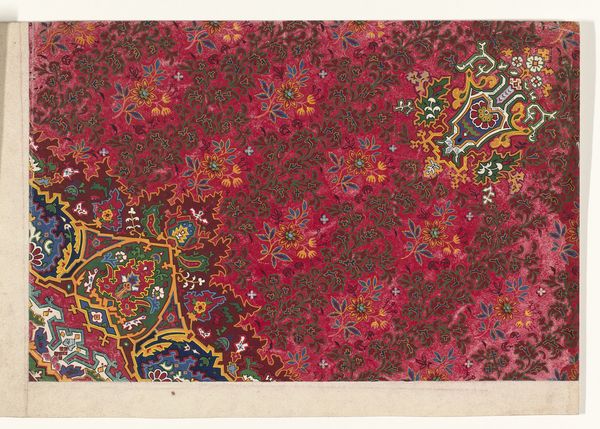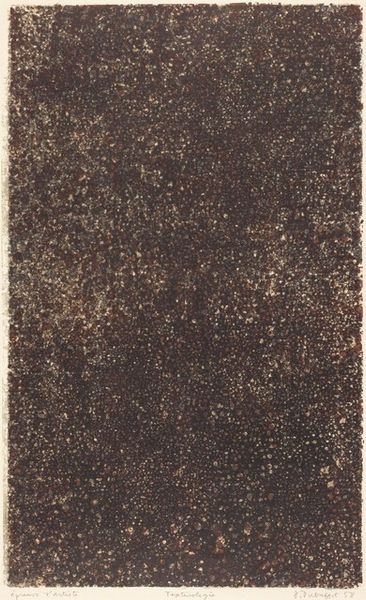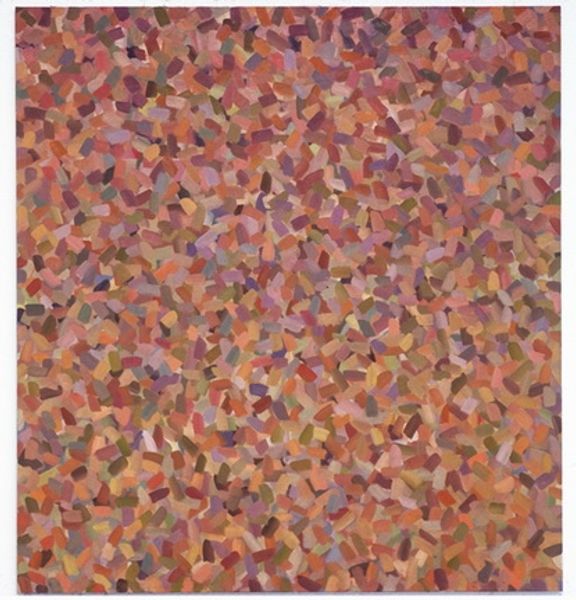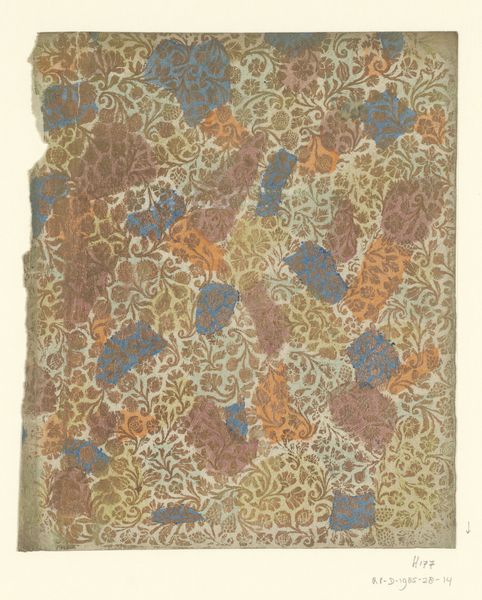
painting, acrylic-paint
#
painting
#
acrylic-paint
#
geometric pattern
#
abstract pattern
#
organic pattern
#
flower pattern
#
abstraction
Copyright: Emily Kame Kngwarreye,Fair Use
Editor: Right, let’s discuss Emily Kame Kngwarreye’s "Untitled (Dried Flowers and Fruits)," painted in 1990 using acrylic. It feels like looking at an aerial view of a landscape, all these tiny dots creating a sense of vastness and maybe even fragility. What’s your interpretation of this work? Curator: I see this painting as deeply embedded in its cultural context. Kngwarreye was an Anmatyerre woman, and her work reflects her deep connection to the Australian landscape and her ancestral knowledge. The “dots” you mention can be interpreted as a mapping of her Country, representing seeds, plants, and the cycles of life that are vital to her community’s identity and survival. The title gives us a possible subject, but doesn’t completely define what it represents. What impact might that have on how it's received? Editor: It opens it up to broader interpretation. I can see how the repetitive patterns also connect to the Pattern and Decoration movement. Curator: Exactly. This isn't just about aesthetics. Consider the history of Indigenous land rights and the ongoing struggles for recognition and sovereignty. This painting can be seen as an assertion of presence, a reclaiming of space, and a powerful statement about the enduring relationship between Indigenous people and their land. Do you see a political dimension emerging? Editor: Yes, I do. The act of creation itself,rooted in cultural tradition and connected to contemporary political movements, is really significant. Curator: Precisely. It resists a singular reading. This piece makes us reconsider dominant art historical narratives. By engaging with Indigenous art, we expand our understanding of art’s function. Editor: I definitely see this in a different light now. It’s much more than a pretty pattern. Curator: And that's the point. It’s a dialogue about identity, place, and resistance.
Comments
No comments
Be the first to comment and join the conversation on the ultimate creative platform.
